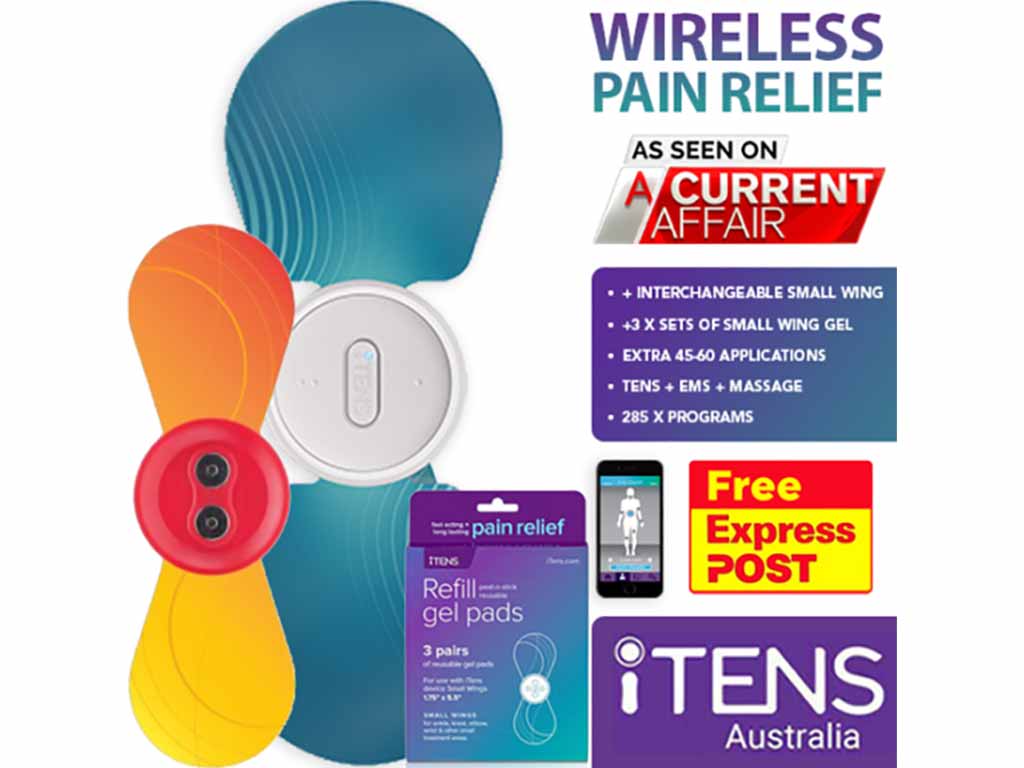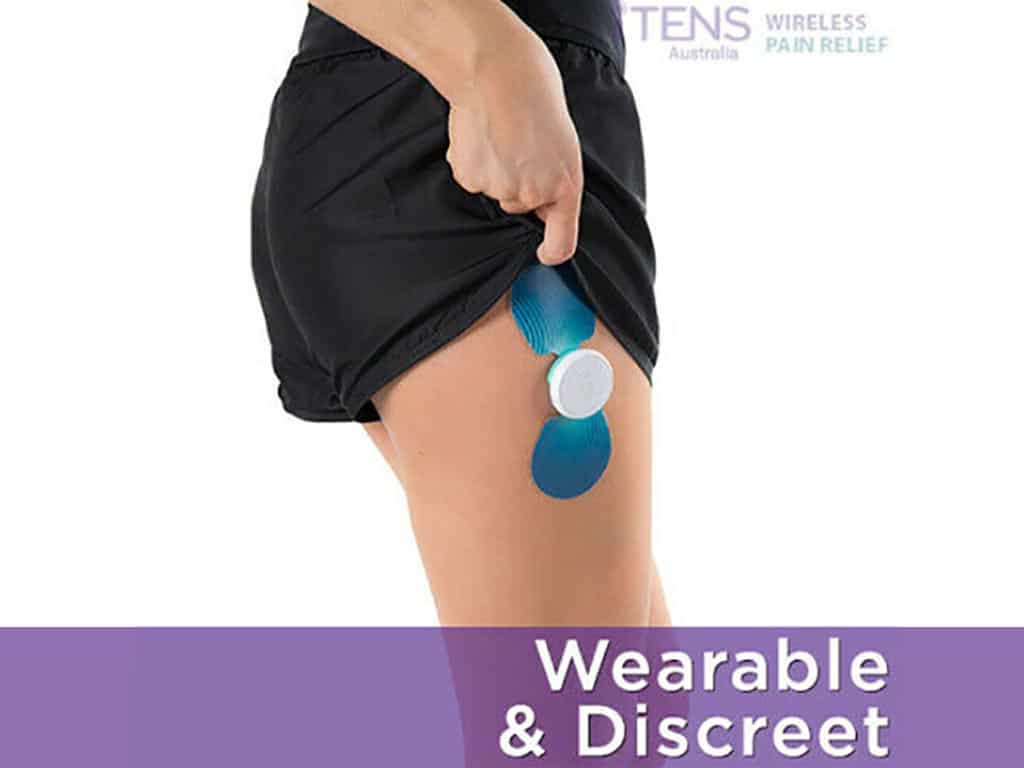
Transcutaneous Electrical Nerve Stimulation (TENS) is a method of pain relief. It utilises an electronic device that delivers electrical currents to the body. Accordingly, the stim TENS unit works behind various analgesic mechanisms. The electrical pulses can block the transmission of pain signals to the brain. It can also stimulate the production of endorphins. Furthermore, TENS therapy serves users with various benefits. It is versatile, drug-free, non-invasive, adjustable, and can provide targeted relief.
Acute pain and chronic pain conditions affect the overall quality of life. Physical therapy programs and medications may offer relief. However, they may not always be effective and may have side effects. Fortunately, the pain management and the rehabilitation world have seen many advancements. One such development is the TENS technology. It is an effective and safe treatment approach. This article will present the stim TENS device, including how it works and its benefits.
What is a Stim TENS Unit?
A stim TENS unit serves as a pain relief tool. It is a battery-powered device that sends electrical pulses to the body via adhesive electrodes attached to the skin. Physical therapists and pain management professionals often recommend TENS therapy. They see it as beneficial for patients struggling with an array of conditions. Individuals may also purchase a TENS device for personal use.
TENS machines come in two varieties: wired and wireless. The wired models connect the electrode pads to the central machine through lead wires. Conversely, wireless models offer more freedom of movement. They eliminate the need for physical connections between the electrode patches and the device. Nevertheless, users can control the electrical stimulation manually or on a smartphone.
Furthermore, using a TENS device involves several simple steps. Initially, the user must clean and dry the skin where the electrodes will be placed. Attach the electrode patches accordingly, following the electrode placement guide. After placing the electrodes securely, turn on the device and adjust the settings. It is crucial to start low and gradually increase the intensity to a comfortable level.
Brief History of TENS Therapy
- The concept behind TENS therapy traces back to ancient civilisations. Doctors utilised electric fish to relieve discomfort.
- The discovery of electricity in the 18th century marked a turning point. Scientists began experimenting with electrical devices to treat various ailments.
- The development of TENS therapy began in earnest during the 1960s. Researchers introduced the Gate Control Theory of Pain.
- First TENS devices were developed and marketed in the 1970s. These early models were bulky and required professional operation.
- The 1980s and 1990s saw technological advancements that made TENS machines more accessible and user-friendly.
- Over the years, the introduction of wireless technology has further revolutionised TENS therapy.

How a Stim TENS Unit Works
Stim TENS units work based on basic science mechanisms. Foremost, TENS therapy operates on the Pain Gate Theory. It posits that the nervous system can only transmit limited information. The TENS device essentially “clogs” these pathways by delivering electric currents to the nerve fibres. The brain focuses more on the sensation generated by TENS. Thus, it inhibits the transmission of pain signals to the brain.
In addition, the electrical pulses from the TENS device stimulate the production and release of endorphins. These are the natural painkillers of the body. Endorphins are neurotransmitters that bind to opioid receptors in the brain and spinal cord. As a result, it reduces the perception of discomfort and promotes a sense of well-being. Endorphins provide a level of pain relief.
Using a TENS machine can also promote blood circulation in the treated areas. The electrical pulses encourage blood vessel dilation, increasing blood flow. Nevertheless, enhanced circulation helps to reduce inflammation, promote healing, and relieve discomfort. It aids in removing waste products and delivering oxygen and nutrients to the body tissues.
Low and High Frequencies
A TENS machine employs varying frequencies to alleviate discomfort. Low-frequency (Acupuncture-like TENS) operates typically below 10 Hz. It is designed to mimic the natural pain relief processes of the body. It predominantly focuses on stimulating the body to produce endorphins. Nevertheless, this mode can provide a relaxing and soothing sensation.
On the other hand, high-frequency (Conventional TENS) functions above 50 Hz. It targets the pain gate mechanism in the nervous system. It overloads the system to prevent pain messages from reaching the brain. The high-frequency setting is particularly effective for immediate relief from acute conditions. Users may perceive this as a tingling sensation.

Benefits of Using a Stim TENS Unit
Firstly, the stim TENS unit excels in providing focused treatment. By applying electrodes directly or near the discomfort area, users experience immediate relief. It precisely targets where the relief is needed most. Secondly, TENS therapy is non-invasive. The device works externally, requiring no surgical procedures or penetration of the skin. It eliminates infections and prolonged surgery recovery.
Thirdly, TENS treatment is drug-free. It presents a significant advantage for those who may suffer from side effects associated with painkillers or wish to avoid the risk of dependency. Fourthly, its versatility in treating various types of pain makes the TENS machine a valuable tool for a broad audience. This adaptability extends to its capacity to combine with other treatments.
Furthermore, TENS devices are equipped with adjustable settings. It allows users to tailor the frequency, intensity, and duration of the electrical stimulation. It ensures that the therapy remains within a comfortable threshold for the individual. Additionally, the compact and lightweight design of modern units affords users the convenience of portability. They can use it at home, work, or while travelling.
Treatable Conditions
Foremost, TENS can provide immediate relief to acute (short-term) pain. It often arises due to post-operative pain, sports injuries, tension headaches, and menstrual cramps. Accordingly, TENS therapy offers a solution for chronic (long-term) pain. It may include backaches and arthritis.
Additionally, musculoskeletal pain, which encompasses conditions affecting muscles and bones, responds well to TENS. It may involve joint pain, osteoarthritis, and rheumatoid arthritis. TENS can also manage neuropathic pain arising from damaged nerves. It may include sciatica and diabetic neuropathy. Furthermore, TENS treatment can address muscle pain, including muscle tension, muscle spasms, and strained muscles.
Conclusion
Overall, the stim TENS unit is a highly effective device for managing discomfort. Its concept traces back to ancient civilisations and has revolutionised over the years. Nevertheless, it is a battery-powered unit that delivers electrical currents to the body. It streams the pulses through electrode patches placed on the skin. Furthermore, TENS therapy works by interrupting the pain signals travelling to the brain. It can also trigger the production of endorphins and promote blood circulation in the treatment region.
The TENS device employs varying frequencies to alleviate pain. It can send electrical impulses in low (below 10 Hz) and high (above 50 Hz) frequencies. Moreover, TENS presents a multitude of benefits to users. It is non-invasive, drug-free, versatile, adjunctive, adjustable, and can provide targeted relief. The modern units are also compact and lightweight. Additionally, TENS therapy can treat various conditions. It can manage tension headaches, backaches, joint pain, sciatica, and muscle tension.




















